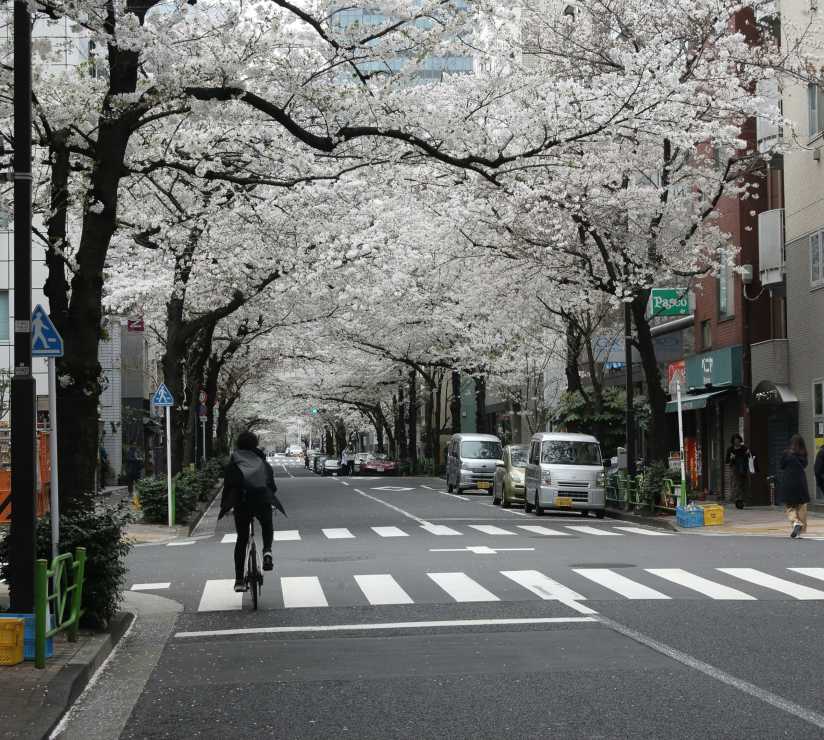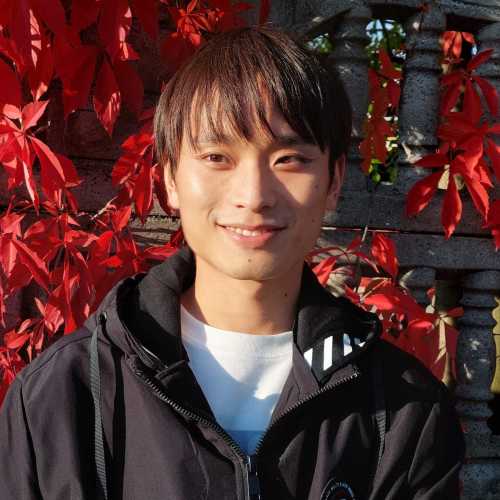Table Of Contents
- The Reality Check: Is 3 Days in Osaka Actually Enough?
- Getting Your Bearings: Transportation and Navigation Strategy
- Day 1: Foundations & Food
- Day 2: Culture, Contrasts & Nighttime Streets
- Day 3: Regional Excursions and Final Explorations
- Is 3 Days in Osaka Enough? The Honest Assessment
- Alternative Day 3 Option: Waterfront Experience
- Alternative Options: Universal Studios Japan and Theme Park Considerations
- Practical Considerations: Safety, Timing, and Logistics
- Comparing Options: Osaka vs Kyoto as Your Base
- Hidden Gems and Off-Path Discoveries
- Food Culture Deep Dive: Beyond the Famous Dishes
- Cultural Insights: Understanding Modern Osaka
- Final Recommendations: Making Your 3 Day Osaka Itinerary Personal
- Conclusion: Your 3 Day Osaka Itinerary Awaits
Look, I'll be straight with you. I've lived in Osaka Japan for most of my life, and I still discover new corners of this city. But three days? That's enough time to get a genuine taste of what makes Osaka tick, assuming you're not here to tick boxes on some generic bucket list.
Treat your visit as a dream trip, Osaka is full of unique and memorable experiences that can make your journey truly unforgettable.
This isn't your typical 3 days in Osaka itinerary stuffed with every must-see attraction. Instead, it's what I'd actually show a friend visiting for the first time; the places that matter, the food that counts, and the experiences that stick. No fluff, no Instagram-perfect moments that disappoint in person.

Early morning commuters at Osaka Station with the sunrise filtering through glass Photo by hayato togashi on Unsplash
The Reality Check: Is 3 Days in Osaka Actually Enough?
Let's address this upfront because everyone asks. 3 days in Osaka gives you enough time to understand the city's rhythm without feeling rushed. You'll hit the major cultural sites, eat exceptionally well, and get a feel for different neighborhoods. What you won't do is see everything — and that's fine.
Osaka isn't Tokyo. It's more compact, more focused, and honestly more forgiving for short visits. The city centers around food, castle history, and a particular brand of humor that takes time to appreciate but rewards those who pay attention.
The key is accepting that this 3 day Osaka itinerary prioritizes depth over breadth. We're going for authentic experiences over photo ops, real neighborhoods over tourist zones, and actual local recommendations over whatever's trending on social media.
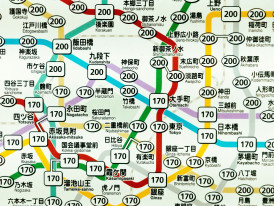
A colorful subway map showing the interconnected lines of Osaka's transit system. Photo by Jackie Alexander on Unsplash
Getting Your Bearings: Transportation and Navigation Strategy
Before we dive into daily breakdowns, let's talk logistics. Your Osaka itinerary success hinges on understanding the city's transit backbone. Osaka's public transport system; including subways, buses, and trains, is highly efficient and offers extensive coverage, making it easy to navigate the city and reach major destinations.
Airport Connections and Key Hubs
Flying into Kansai international airport? Many international travelers benefit from direct flights to Kansai, making arrival in Osaka straightforward. The train journey to central Osaka takes about 45 minutes via the Kansai Airport Express. Don't overthink this — buy a ticket, find a seat, and use the ride to mentally transition from travel mode to exploration mode.
Kansai international airport connects directly to Osaka station and Namba station, your two main transit hubs. Pick your accommodation near one of these, and you'll thank yourself later.
Osaka Station serves as the northern hub, think business district meets shopping complex. It's efficient, modern, and connects you to regional destinations like Kyoto and Nara. Namba Station, further south, sits in the heart of the entertainment and food district where the energy feels more distinctly Osakan, neon signs, narrow alleys, and the constant sizzle of street food.
Understanding these two anchor points simplifies your entire Osaka itinerary. Most attractions connect to one or both stations via subway lines that actually make sense once you've ridden them twice.
Navigation Tips and Transportation Passes
Color-coded line maps, English announcements, and smartphone translation apps eliminate most navigation confusion within a day or two of arrival. The learning curve pays dividends throughout your stay and builds confidence for independent exploration.
Various transportation passes offer savings for visitors planning multiple regional visits or extensive local travel. However, calculating actual value requires honest assessment of your planned activities rather than theoretical maximum usage. For most visitors following a 3 day Osaka itinerary, individual ticket purchases provide more flexibility than pass restrictions.
When considering transportation passes, be aware that some passes may have an extra cost for certain routes or services, so travelers should check the details before purchasing.
Osaka's public transportation system operates later than many international cities, but it does shut down overnight. Understanding last train times prevents situations where expensive taxi rides become your only option for returning to accommodation. Late-night bus services and 24-hour taxi availability provide backup options.
Looking for a private city experience in Osaka?
Explore the city with a local who plans a private day just for you; no groups, no scripts.
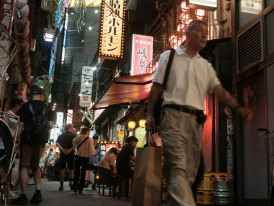
A narrow alley lined with small restaurants, their warm light spilling onto the street Photo by Perry Merrity II on Unsplash
Day 1: Foundations & Food
Morning: Osaka Castle and Historical Context
Start early at Osaka castle, not because it's mandatory, but because it's genuinely impressive before the tour groups arrive. The original Osaka castle structure was destroyed in World War II, then rebuilt in concrete — a fact that disappoints some visitors and perfectly encapsulates modern Japan for others.
The Osaka castle grounds are free to wander, and honestly, that's where the real experience lies. The exterior architecture against Osaka's skyline, especially during cherry blossom season, provides context for understanding how this city has evolved. Within the grounds, you'll also find a tranquil Japanese garden, offering scenic views and a peaceful spot to relax amid the historic setting.
Inside Osaka castle, the museum covers Osaka's role in the country's unification period. It's more engaging than expected, particularly the sections on merchant culture that shaped the city's character. The elevator to the observation deck feels incongruous but provides excellent orientation views for the rest of your 3 day Osaka itinerary.
Late Morning: Castle Park and Cherry Blossom Culture
The castle park deserves more time than most visitors allow in their Osaka itinerary. This isn't just filler between attractions, it's where you'll see locals exercising, families picnicking, and cherry blossom creating natural frames for the castle architecture.
During cherry blossom season, the park transforms into something special. Not Instagram-explosion special, but quietly beautiful in a way that makes you understand why locals choose this spot for Hanami celebrations. The cherry blossom viewing culture here represents authentic Osaka traditions that continue regardless of tourism trends.
The contrast between the reconstructed Osaka castle and the natural cherry blossom displays creates perfect photo opportunities while providing cultural education about seasonal celebrations in Osaka Japan.
Afternoon: Central Osaka Food Culture Immersion
From Osaka castle, the subway ride to central Osaka takes about fifteen minutes. This transition from historical site to food district illustrates Osaka's practical approach to urban planning, nothing wastes time or space. In fact, many of Osaka's best food spots and attractions are within walking distance of each other in the central districts, making it easy to explore on foot.
Your afternoon focus should be understanding Osaka's food culture, which requires both structured exploration and spontaneous discoveries. This isn't about finding the "best" takoyaki stand (they're all good, and locals argue endlessly about preferences). It's about understanding how food functions as social currency here.
Street food in Osaka isn't just snacks; it's cultural immersion. Start with takoyaki, obviously, but don't limit yourself to the famous stands. Some of the best experiences happen at unmarked stalls where the owner recognizes repeat customers and adjusts seasoning based on personal preference.
Okonomiyaki comes next, and here's where locals get opinionated. The Osaka style differs significantly from Hiroshima's version, and ordering wrong marks you as an outsider. When in doubt, point at what the person next to you is eating and nod appreciatively.
Evening: Dotonbori Reality Check
Everyone ends up in Dotonbori eventually. It's touristy, crowded, and absolutely worth experiencing, once. As one of Osaka's major tourist areas, Dotonbori attracts visitors from around the world. The neon signs, river views, and general chaos represent Osaka's extroverted personality turned up to maximum volume.
The area works best approached with realistic expectations. You're not discovering hidden gems here; you're experiencing Osaka's most famous neighborhood in all its commercial glory. Embrace the spectacle, take your photos, then dig deeper into side streets for more authentic encounters.
For dinner, venture away from Dotonbori's main strip. The parallel streets and narrow alleys contain restaurants where locals actually eat. Look for places with handwritten menus, minimal English, and customers who seem to know the staff personally.
This approach requires comfort with uncertainty, but it consistently leads to better food and more authentic experiences. Point, smile, and trust the process, most Osaka restaurant owners take pride in feeding people well. For a more intimate and authentic nightlife, consider exploring local bars in the area, which often offer a unique glimpse into Osaka's neighborhood culture.

A quiet central Osaka street at night with convenience store lights and few pedestrians. Photo by Mak on Unsplash
Day 2: Culture, Contrasts & Nighttime Streets
Morning: Sumiyoshi Taisha and Spiritual Osaka
Day two starts with Sumiyoshi Taisha, one of Japan's oldest shrines and a sharp contrast to yesterday's urban energy. This isn't tourist-trap spirituality; it's a functioning religious site that's been continuously active for over 1,800 years. Osaka is also home to some of Japan's oldest temples, such as Shitennoji, which reflect the city's deep religious heritage.
The shrine architecture follows ancient Shinto styles, predating Chinese Buddhist influence. For architecture enthusiasts, this represents pure Japanese design principles. For everyone else, it's simply peaceful and beautiful.
Late Morning: Shin-Yokohama and Local Life
From Sumiyoshi, head to the Shin-Yokohama area — not for major attractions, but to observe how regular Osaka residents live and work. This neighborhood offers insight into daily life beyond tourist zones.
Local markets, small parks, and neighborhood restaurants provide texture that tourist areas lack. You're not looking for specific destinations here; you're experiencing the rhythm of residential Osaka.
Afternoon: Kuromon Ichiba Market Experience
Kuromon Ichiba Market, often referred to as "Osaka's Kitchen," serves as a vibrant culinary hub where both locals and visitors can explore and purchase fresh, local ingredients. This lively market is not only where residents shop for their daily needs, but it has also become a popular tourist destination, blending authentic market culture with visitor expectations.
Navigate this by shopping like a local first, touring like a visitor second. Buy ingredients you actually plan to use, observe the interaction between vendors and regular customers, then indulge in the prepared foods aimed at tourists.
The market's prepared food section offers excellent sampling opportunities. Wagyu beef skewers, fresh sashimi, and seasonal fruits provide quality that justifies the tourist-friendly pricing.
Late Afternoon: Sumiyoshi District Exploration
The area around Sumiyoshi Taisha rewards extended exploration. Traditional craft shops, small museums, and local cafes create a district that feels distinctly different from central Osaka.
This is where you'll find Osaka experiences that don't make it into standard guidebooks — artisan workshops, neighborhood shrines, and local gathering spots that rely on community rather than tourism.
Early Evening: Transition Back to Central Areas
The return journey to central Osaka provides time to process the day's contrasts. Osaka's city center is especially convenient and well-connected, making it easy for travelers to access major attractions, transportation options, and accommodations. Traditional shrine architecture versus modern urban planning, tourist markets versus neighborhood streets, spiritual spaces versus commercial districts.
Use this transition to plan your evening approach. Tonight's focus should be experiencing Osaka's nightlife culture, which operates differently from other Japanese cities.
Evening: Shinsekai and Alternative Osaka
Shinsekai represents old Osaka, not historical old, but mid-20th century working-class culture that's survived urban development. The area feels rough around the edges because it is, but that's precisely what makes it interesting.
The neighborhood's signature dish, kushikatsu (fried skewers), comes with specific etiquette rules. No double-dipping in the communal sauce, ever. This isn't just politeness; it's community hygiene that locals take seriously.
Night: Pontocho and Adult Osaka
As evening progresses, explore Pontocho; a narrow alley lined with bars, restaurants, and entertainment venues that cater to adults rather than families. This isn't sleazy or dangerous; it's simply where grown-ups go to unwind after work.
The area requires navigation skills and comfort with ambiguity. Many establishments are member-only or cater to regular customers. However, several bars welcome respectful visitors, and the atmosphere provides insight into after-work Osaka culture.
End the evening with a walk through quieter central Osaka streets. The contrast between daytime energy and nighttime calm illustrates another aspect of the city's character.
Late-night convenience stores, 24-hour restaurants, and the occasional drunk salaryman provide context for understanding how this city accommodates different rhythms and needs.
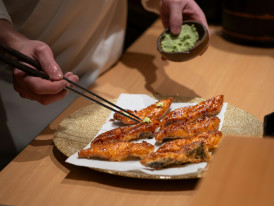
A farewell dinner scene at a small Osaka restaurant with the chef preparing final dishes Photo by Harrison Chang on Unsplash
Day 3: Regional Excursions and Final Explorations
Morning Decision: Nara or Kyoto Options
Your final day requires choosing between a Nara day trip or Kyoto exploration. Both connect easily from Osaka station, both offer distinct experiences, and both deserve full attention rather than rushed visits.
The Nara day trip takes about 45 minutes from Osaka station and delivers immediate payoff. Nara Park's deer population isn't just a tourist gimmick, these animals roam freely throughout the city, creating surreal moments when wildlife intersects with urban life.
Todai-ji Temple is a significant Buddhist temple, renowned for its religious and historical importance. It houses one of Japan's largest bronze Buddha statues, impressive enough to justify the journey alone. The surrounding temple complex and its relationship with the deer create an experience that's simultaneously spiritual and whimsical.
Nara works as a day trip because it's compact and focused. You're not trying to understand an entire city; you're experiencing a specific combination of history, nature, and culture that exists nowhere else. Including this Nara day trip in your Japan itinerary provides a unique blend of history, nature, and culture that enriches your overall travel experience.
The deer have learned to bow for crackers, creating photo opportunities that feel both authentic and slightly ridiculous. This tension between genuine tradition and tourist interaction characterizes much of modern Japan.
Alternatively, a Kyoto visit from Osaka Japan takes similar travel time but requires more strategic planning. Kyoto's attractions spread across greater distances, and the city's tourist density can be overwhelming during peak seasons.
The bullet train to Kyoto from Osaka takes only 15-30 minutes depending on your departure station, making it easily accessible within your 3 day Osaka itinerary. However, regular express trains offer a more economical option at 45-60 minutes travel time. Travelers with a jr rail pass can use it for convenient and cost-effective travel between Osaka and Kyoto, making the journey even smoother.
If you choose Kyoto, focus on one district rather than attempting city-wide coverage. Gion, Arashiyama, or the eastern temple district each provide full-day experiences without the exhaustion of constant transit.
Many travelers ask: is 2 days in Osaka too much? The answer depends entirely on your travel style and interests. Two days provides adequate time for major attractions and food experiences, but three days allows for the neighborhood exploration that transforms visitors into temporary residents. This 3 day Osaka itinerary balances efficiency with depth; you're not rushing between photo opportunities, but actually experiencing Osaka Japan culture.
Osaka station serves as an excellent hub for regional exploration. Trains to Kyoto, Nara, and other Kansai destinations depart frequently throughout the day, making spontaneous travel decisions practical. A Nara day trip requires minimal planning; purchase tickets at the station, board the express train, and arrive in the historic city within an hour. Return trains operate until late evening, providing flexibility for extended exploration.
Travel tip: To maximize your efficiency, check train schedules in advance to ensure smooth connections and make the most of your time.
Afternoon: Return and Final Osaka Exploration
Regardless of your morning choice, return to Osaka with enough time for final neighborhood exploration. Use this afternoon to revisit areas that particularly appealed to you or explore districts you missed.
This is also ideal timing for last-minute shopping or gift purchasing, though Osaka's best souvenirs tend to be food-related rather than traditional crafts. You can also indulge in a shopping spree at popular discount stores like Don Quijote, where the excitement and abundance of products make for a memorable shopping experience.
Late Afternoon: Umeda Sky Building Perspective
End your Osaka itinerary with perspective from the Umeda Sky Building's observation deck. The 360-degree city views provide context for everything you've experienced over three days.
From this height, Osaka's diverse neighborhoods—like the vibrant Nishi ward, bustling Minami district, and the historic Osaka Castle area—stand out, along with the city's green spaces. You can even spot temple grounds and other historical sites nestled among the modern cityscape, showing how the castle grounds create green space, how rivers divide districts, and how modern development integrates with historical sites.
Evening: Departure Preparation and Final Meal
Your final evening should balance departure preparation with one last excellent meal. If you're flying out early, stay near Osaka station for easy airport access. Choosing accommodations in this area can also help you save money on transportation costs. If you have morning flexibility, prioritize one final neighborhood you haven't fully explored.
For your farewell dinner, return to wherever you ate best during your stay. Osaka's food culture rewards return visits and relationship building, even over short periods.
What if your day in Osaka was planned by someone who knows it — and you?
City Unscripted matches you with a local host who creates a private experience based on your interests, not a set route.
Is 3 Days in Osaka Enough? The Honest Assessment
After three days following this Osaka itinerary, you'll have experienced Osaka's core personality — its food culture, historical significance, neighborhood diversity, and daily rhythms. You won't have seen everything, but you'll understand what makes this city distinct from Tokyo, Kyoto, or other Japanese destinations. A well-planned Osaka trip allows for meaningful experiences, making the most of your time in this vibrant city.
Three days provides enough time to move beyond surface-level tourism into genuine experience. You'll have favorite neighborhoods, preferred restaurants, and navigation confidence that transforms you from visitor to temporary resident.
The question isn't whether three days is enough to see everything — it's not. The question is whether three days provides meaningful engagement, and the answer is absolutely yes, assuming you approach the experience with realistic expectations and local perspective.

The Tempozan Ferris Wheel at sunset with Osaka Bay and city skyline in the background Photo by Tsuyoshi Kozu on Unsplash
Alternative Day 3 Option: Waterfront Experience
Instead of regional travel, consider exploring the waterfront and its attractions for a different perspective on this Osaka Japan destination. Including the waterfront in your Osaka travel itinerary offers a different perspective on the city and allows you to experience unique attractions and accommodations.
Kaiyukan: World-Class Marine Experience
The aquarium, officially called Kaiyukan, ranks among the world's largest and most impressive aquatic experiences. The facility houses over 30,000 creatures representing the Pacific Rim ecosystem. The central tank, holding 5,400 tons of water, creates an underwater cathedral where whale sharks glide past massive viewing windows. This isn't just an aquarium visit — it's marine education that contextualizes Osaka within the broader Pacific region.
The spiral walkway design allows multiple viewing angles of the same ecosystem, creating an immersive experience that changes as you descend. Children and adults alike find themselves mesmerized by the jellyfish displays, where translucent creatures pulse through carefully lit water like living art installations.
Waterfront District Exploration
The waterfront area offers a completely different energy from central Osaka districts. Tempozan Harbor Village combines shopping, dining, and entertainment in a waterfront setting that locals use for weekend recreation and evening dates.
The Tempozan Giant Ferris Wheel provides panoramic views and the city skyline, particularly spectacular during sunset when the urban landscape transitions from daylight business activity to evening entertainment lighting.
This waterfront alternative works particularly well for travelers who prefer a more relaxed pace or families with children who might find intensive exploration exhausting. The waterfront provides open space, marine education, and leisure activities that complement rather than compete with your earlier experiences.
The area also offers excellent photography opportunities that showcase modern Osaka infrastructure and urban planning. The contrast between traditional neighborhoods explored earlier and this contemporary waterfront development illustrates the city's evolution and future direction.

The colorful entrance to Super Nintendo World with Mario-themed decorations Photo by Roméo A. on Unsplash
Alternative Options: Universal Studios Japan and Theme Park Considerations
Some visitors ask about incorporating universal studios Japan into their 3 day Osaka itinerary. The park, particularly super Nintendo world, offers world-class entertainment that can easily consume an entire day.
However, universal studios Japan and super Nintendo world represent a different travel priority. If theme parks rank high on your interest list, dedicate one full day to universal studios rather than trying to squeeze it into your exploration Osaka itinerary.
Universal studios provides excellent entertainment value, but it doesn't offer insight into Osaka culture or daily life. Consider your travel goals when deciding whether to include universal studios time in your 3 days in Osaka.
Tip
We match you with the right host, not just any guide.Want to experience the real Osaka with someone who lives there?
A fully private experience, planned and led by a local host who tailors the day to you
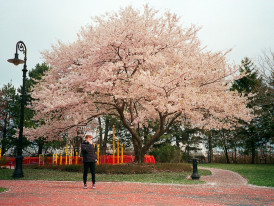
Cherry blossom trees in full bloom with petals falling like snow in a quiet park Photo by Yunfan Xu on Unsplash
Practical Considerations: Safety, Timing, and Logistics
Walking Safety in Osaka
Visitors frequently ask about safety walking in Osaka at night. The reality is that Osaka is remarkably safe by international standards, particularly in central districts and tourist areas. Standard urban precautions apply, but violent crime targeting tourists is extremely rare.
The biggest nighttime safety concern is navigation rather than personal security. Osaka's narrow alleys and similar-looking streets can be confusing after dark, especially after drinking. Carry a hotel business card and ensure your phone has offline maps downloaded. For reliable navigation, travelers should use Google Maps and download maps in advance to ensure data availability and added safety.
Timing Your Visit: Seasonal Considerations
Cherry blossom season (late March to early April) offers stunning visual experiences but also brings crowds and higher prices. The cherry blossom around Osaka castle and throughout the city create magical moments, but popular spots become packed with both tourists and locals celebrating hanami. Most tourists plan their visits around this time to experience the beauty of the cherry blossom.
Summer in Osaka means heat and humidity that can be physically challenging for extensive walking. Plan indoor alternatives and adjust your daily schedule to avoid midday sun exposure.
Winter provides the most comfortable weather for exploration, though some outdoor attractions have limited hours. The trade-off between weather comfort and seasonal attractions requires personal preference decisions.
Budget Planning Reality
Osaka can accommodate various budget levels, but certain costs remain fixed. Transportation, major attraction admissions, and restaurant meals in tourist areas follow predictable pricing that varies little based on negotiation or timing.
Budget flexibility comes in accommodation choices, meal frequency at high-end establishments, and souvenir purchasing. Travelers on a mid range budget can find centrally located hotels that offer good value and comfort, making it easy to access major attractions while maintaining reasonable costs. Street food and local restaurants offer exceptional value, while department store dining and hotel restaurants command premium prices.
Planning your Osaka itinerary around peak meal times at local establishments versus tourist restaurants can significantly impact daily expenses without compromising experience quality.
Comparing Options: Osaka vs Kyoto as Your Base
Many travelers debate whether to base themselves in Osaka or Kyoto when exploring the Kansai region. Each city offers advantages depending on your priorities and travel style.
Osaka provides better food variety, more dynamic nightlife, and easier airport access. The city's compact size makes neighborhood exploration more efficient, and local transportation connects major attractions directly. Visit Osaka for its dynamic food scene and convenient location, making it an ideal starting point for your Kansai adventure.
Kyoto offers more traditional architecture, temple experiences, and historical districts that photograph beautifully. However, Kyoto's tourist density can be overwhelming, particularly during cherry blossom season and autumn foliage periods.
For first-time visitors to the region, Osaka as a base provides easier logistics while still allowing access to Kyoto's major attractions. The return journey to Osaka each evening offers familiar navigation and established restaurant relationships.
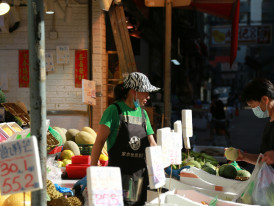
A local neighborhood market with vendors arranging fresh vegetables and chatting with customers Photo by Alison Pang on Unsplash
Hidden Gems and Off-Path Discoveries
Your Osaka itinerary should include space for unplanned discoveries that happen when you wander without specific destinations. Some of Osaka's best experiences occur in narrow alleys, neighborhood shrines, and small establishments that don't advertise to tourists. When I found Osaka through spontaneous exploration, I was surprised by the city's unique charm and the hidden gems that made my trip unforgettable.
Neighborhood Shrine Culture
Throughout central Osaka, small shrines tucked between buildings or at street corners provide quiet spaces for reflection and observation. These aren't major tourist destinations, but they offer insight into how spiritual practice integrates with daily urban life.
Local shrine festivals, particularly during summer months, transform neighborhoods into community celebration spaces. If you encounter festival preparation or celebration during your visit, respectful observation provides education that guidebooks can't replicate.
Artisan Districts and Craft Culture
Beyond major shopping districts, Osaka maintains neighborhoods where traditional crafts continue to operate alongside modern businesses. Knife-making, textile work, and food preparation tools receive particular attention from artisans who serve both local professionals and international collectors.
These workshops typically don't cater to casual tourists, but respectful interest and genuine questions often lead to demonstrations and explanations that provide deep insight.
For more Japan inspiration, consider exploring traditional crafts and artisan workshops to experience authentic Japanese culture and creativity firsthand.
Local Market Culture Beyond Kuromon
While Kuromon Ichiba gets tourist attention, neighborhood markets throughout Osaka serve local communities with fresh ingredients, prepared foods, and social interaction that follows patterns established over decades.
Visiting these markets requires navigating language barriers and differences, but the experience provides authentic insight into how Osaka residents actually shop and eat on a daily basis. Most local markets prefer payment in Japanese yen, so it's helpful to carry cash.
Ready to plan your perfect day in Osaka?
Start your experience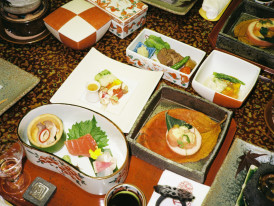
A chef preparing seasonal dishes with ingredients displayed to show their natural beauty Photo by Cecelia Chang on Unsplash
Food Culture Deep Dive: Beyond the Famous Dishes
Your Osaka itinerary should explore the city's food culture beyond takoyaki and okonomiyaki, though those dishes remain essential experiences. Osaka's food reputation builds on variety, quality, and the social aspects of eating that may not be immediately obvious to visitors. Osaka's Minami district is a vibrant area known for its diverse offerings, making it a popular destination for food lovers.
Many Osaka restaurants operate according to unwritten rules that locals understand instinctively. Counter seating at small establishments often involves conversation with other customers and the chef, creating social experiences alongside meals. Table manners, ordering protocols, and payment procedures follow patterns that become clear through observation and respectful participation. Most restaurant owners appreciate visitors who make genuine attempts to follow local customs, even when mistakes happen.
Osaka's food culture celebrates seasonal ingredients with specialties that appear only during specific months. Soft-shell crab in summer, persimmons in autumn, and hot pot variations in winter provide eating experiences tied to natural cycles. Planning your Osaka itinerary around seasonal food availability adds depth and provides eating experiences that connect to Japanese concepts of seasonal harmony and ingredient respect. Exploring these seasonal dishes can also offer Japan inspiration for your future adventures.
Osaka's drinking establishments range from family-friendly beer gardens to sophisticated cocktail bars that require jacket-and-tie dress codes. Understanding which venues match your comfort level and social goals improves evening experiences significantly. Many bars in central Osaka welcome solo travelers, particularly those who show interest in local customs and genuine appreciation for craft cocktails or sake selection. Counter seating facilitates conversations that provide insight beyond guidebook information.

A traditional comedy theater in Osaka with vintage posters advertising local performers Photo by fumiko nishida on Unsplash
Cultural Insights: Understanding Modern Osaka
Your Osaka itinerary provides opportunities to observe how traditional Japanese culture adapts to modern urban life, creating combinations that exist nowhere else in the world. Let Osaka's unique blend of tradition and modernity serve as travel inspiration as you plan your journey and explore the city's vibrant culture.
Osaka's commercial districts showcase Japanese business culture in action, from morning coffee rituals to after-work entertainment that follows patterns established over decades of economic development. Respectful observation of these daily rhythms provides insight into values, priorities, and social structures that shape modern Japanese society beyond tourist attractions and performances.
Osaka residents take pride in their city's comedic tradition and linguistic differences from standard Japanese. This regional identity expresses itself through interactions, entertainment preferences, and products that celebrate local characteristics. Understanding and appreciating these regional differences enhances engagement and often leads to more genuine interactions with local residents who appreciate visitors' interest in what makes Osaka distinct from other Japanese cities.
Modern Osaka demonstrates how technological innovation integrates with traditional practices, creating solutions that respect historical values while embracing contemporary efficiency. From temple architecture incorporating modern safety features to traditional restaurants using digital ordering systems, the city provides examples of adaptation that maintain authenticity while improving functionality.
Final Recommendations: Making Your 3 Day Osaka Itinerary Personal
This 3 day Osaka itinerary provides structure and suggestions, but the best travel experiences come from balancing planned activities with spontaneous discoveries that match your personal interests and energy levels. Use this guide as a starting point for visiting Osaka, and feel free to tailor your trip to make the most of what interests you most.
Food enthusiasts should dedicate more time to market exploration, cooking demonstrations, and restaurant experiences that provide deep education. Art and culture focused travelers benefit from extended museum visits, gallery exploration, and traditional craft workshops.
Business travelers or those interested in modern Japanese society might prioritize observation of commercial districts, corporate culture, and technological innovation that shapes contemporary urban life.
Three days of intensive exploration can be physically and mentally exhausting, particularly when combined with jet lag, climate adjustment, and constant processing. Building rest periods, quiet spaces, and flexible scheduling into your Osaka itinerary prevents burnout and allows for better experience absorption.
Some travelers prefer intensive, packed schedules that maximize activity exposure. Others benefit from slower pacing that allows deeper engagement with fewer experiences. Understanding your personal travel style improves overall satisfaction significantly.
Osaka's culture rewards relationship building, even over short periods. Returning to the same restaurant, greeting shop owners with basic Japanese phrases, and showing genuine interest in local recommendations often leads to enhanced experiences and insights.
These relationship-building opportunities require openness to communication challenges, comfort with differences, and genuine curiosity about local perspectives rather than purely transactional tourism interactions.
![A friendly interaction between a tourist and local shop owner in Osaka, both smiling warmly Photo by Justin Bautista on Unsplash]()
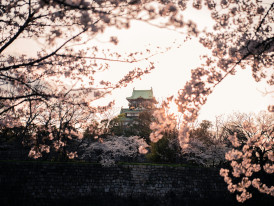
A sunset view over Osaka with the castle, Photo by Satoshi Hirayama on pexels
Conclusion: Your 3 Day Osaka Itinerary Awaits
This Osaka itinerary balances must-see attractions with authentic experiences, providing structure while maintaining flexibility for personal discoveries. Three days in Osaka offers sufficient time for meaningful engagement without the exhaustion of over-packed scheduling.
The city rewards visitors who approach it with genuine curiosity, respect for local customs, and appreciation for experiences that don't always photograph perfectly but provide deep satisfaction and understanding.
Your Osaka itinerary should serve as a starting point rather than a rigid schedule. The best travel experiences often happen when planned activities lead to unexpected discoveries, spontaneous conversations, and insights that guidebooks can't anticipate.
Osaka's combination of historical significance, excellence, authenticity, and modern innovation creates travel experiences that satisfy various interests while providing cohesive understanding of contemporary Japanese urban life.
Whether you're drawn by the food culture, historical sites, modern entertainment, or simply the opportunity to experience a major Japanese city beyond Tokyo, this 3 day Osaka itinerary provides the foundation for rich, personally meaningful travel that extends beyond typical tourist experiences.
The city awaits your exploration with characteristic Osakan warmth, humor, and genuine hospitality that makes visitors feel welcome while respecting the boundaries that make authentic travel possible.
What if your day in Osaka was planned by someone who knows it — and you?
City Unscripted matches you with a local host who creates a private experience based on your interests, not a set route.
Want to experience the real Osaka with someone who lives there?
A fully private experience, planned and led by a local host who tailors the day to you
